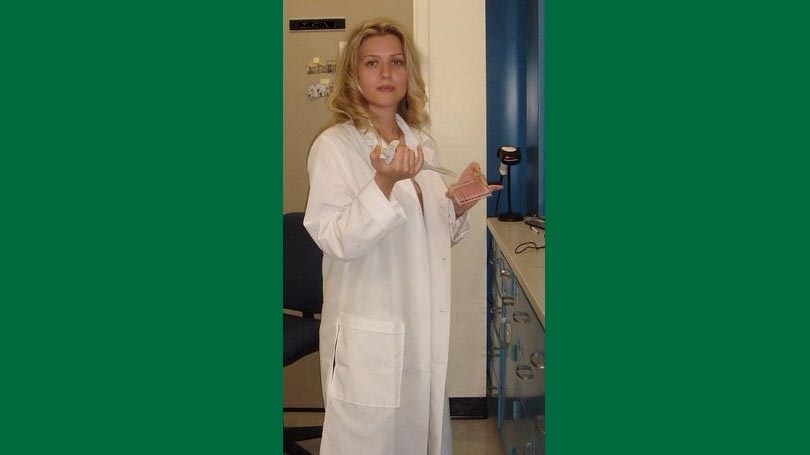
Suzana Car was awarded an Alumni Research Award
Zinc is a micronutrient that plays diverse roles in cellular biochemistry. It is utilized by a number of proteins, serving either a catalytic or a structural role. Zinc is critical to over three hundred enzymes and thus, essential for all forms of life.
Given the diverse biochemical roles of zinc, it is not surprising that zinc deficiency can have detrimental effects. Zinc is important for both plant and human health and the two are tightly linked. In plants and humans, zinc deficient cells fail to divide and differentiate, resulting in impaired organismal growth. In addition to affecting physical growth, zinc deficiency in humans can compromise the immune system, normal functioning of the gastrointestinal tract, neurobehavioral development, and reproductive outcome. It is estimated that more than two billion people worldwide suffer from zinc deficiency, of which elderly and children are the most affected. Zinc deficiency is especially widespread in developing regions of the world where people rely on plant-based diets. Most plants are considered a poor dietary source of micronutrients, including zinc. One strategy to reduce the incidence of zinc deficiency and the resulting chronic diseases is the biofortification of food crops. For this strategy to be successful, it is imperative to fully understand how plants acquire, sequester and distribute zinc.
Metal transporters of the protein family called ZIPs play an important role in zinc homeostasis in plants but their individual roles remain largely unknown.
In the Guerinot lab, we often use a mutant analysis approach where we disrupt particular genes and in order to understand their function, we study the consequences of their disruption. I have created a number of ZIP mutants.
Receiving the Graduate Alumni Research Award enabled me to travel to the National Synchrotron Light Source at Brookhaven National Labs where I analyzed my ZIP mutants using synchrotron X-ray fluorescence (SXRF). SXRF is a technique that allowed me to visualize where zinc is localized in these mutant plants. The data obtained has improved our understanding of the zinc transport machinery and will prove invaluable to future efforts to engineer crops with higher zinc content.